We hope that each of you, our readers, will enjoy and appreciate this article we present about these 7 Intriguing South Carolina Insects. It was certainly our pleasure to compile the information for you. May it provide you with both education and increased awareness.
These few species listed herein represent only a portion of the natural wonders found throughout the region, though. Yet, it’s our belief that they serve as excellent representations of the wonders found here. Check out some of our other articles for similar marvels.
Monarch Butterfly
Monarch Butterfly Facts
- Leading off this article about these 7 Intriguing South Carolina Insects we present the winged wonder named the Monarch Butterfly.
- This breathtaking creation of Nature and evolution most frequently goes by the well deserved common name across its range. It has other less often used titles, though. These include such terms as common tiger, wanderer, and black-veined brown.
- Inside of scientific communities, however, it’s better known by its official moniker. Fortunately for the layperson, that’s a comparatively simple title, as such things go. That’s because this marvelous Lepidoptera bears the official name of Danaus plexippus.
- The invertebrate received that name due to the efforts of the esteemed Swedish zoologist, Carl Linnaeus. He recorded the first recognition of the creature as a separate and distinct species. The researcher accomplished this feat in the year 1758.
- A total of three species actually bear the same general appellation. The specific one referred to in this article, though, is the best known and most commonly referred to. A total of six acknowledged subspecies of the insect also exist across the globe.
- The gorgeous Monarch Butterfly inhabits a moderately large range. It also engages in impressive seasonal migrations. Sadly, the amazing beauty now finds itself in danger. Accordingly, the IUCN thus lists it as Endangered on its Red List of Threatened Species.
- It now faces many threats to its existence. That’s true in both short and long term. Most of these, though, stem from human activities. Human herbicide use has killed much of its food source. It also now faces the same threat of climate change as we all do.
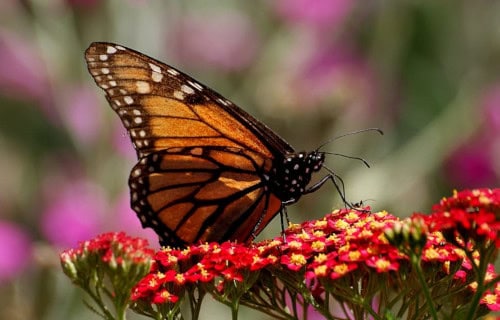
Monarch Butterfly Physical Description
The captivating Monarch Butterfly fully merits appreciation by those who encounter it. Unlike some of its many relatives, though, it does so for several reasons. Its sheer beauty certainly qualifies as one factor. Yet it also boasts some impressive statistics in terms of size.
It does follow one pattern that’s common among its kind, as well. That’s due to the fact that the insect displays a degree of sexual dimorphism. In its case, this physiological trait manifests itself in terms of both size and appearance. As the name implies, its regal.
Physically, males of the species attain a slightly greater wingspan than their female counterparts. But they also display a small difference in terms of appearance. It’s a very minor one, though. On one vein on each hindwing of the males, a tiny black spot displays.
Otherwise, the two genders of the Arthropod present a very similar structure. The wings of both sexes reach an average width of approximately 3.5 – 4 in (8.9 – 10.2 cm). The body, meanwhile, develops as elongated, mostly black, except for a few white spots on the head.
It’s the wings of the aptly-named Monarch Butterfly that garner the most attention, however. The uppersides typically present a tawny orange hue. The many veins of the wings also show black, along with their margins. Two series of small white spots also line those edges.
The forewings additionally show small orange spots near the tips. The undersides displays similar, but not identical patterns. Their hindwings are yellowish brown, with larger white spots. Its forewings also manifest the same yellowish-brown color on their tips.
- Kingdom: Animalia
- Phylum: Arhropoda
- Class: Insecta
- Order: Lepidoptera
- Family: Nymphalidae
- Genus: Danaua
- Species: D. plexippus
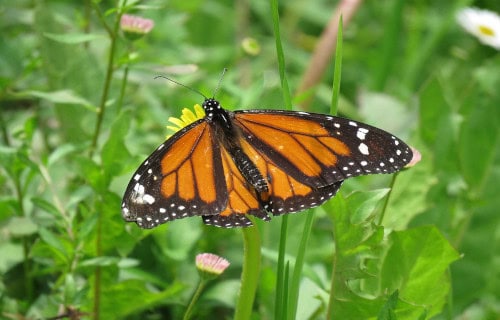
Monarch Butterfly Distribution, Habitat, and Ecology
The stunning Monarch Butterly evolved as native to a relatively broad swathe of the world. The sheer scope of that range might surprise some people, though. That’s true since this insect marvel appears in parts of both the Northern and Southern Hemispheres.
Part of that extends from southern Canada, in North America, to southern South America. It’s also found in Hawaii, Bermuda, the Cook Islands, and other islands in the Caribbean. From there, it also appears from Australia to the Philippines, and as far as Morocco.
This wonder of evolution developed as primarily present in several specific habitat types. Yet it does display some versatility and adaptability. Most individuals, however, make their home in regions consisting of either meadows, grasslands, praries, and along roadsides.
Most further display a strong preference for the presence of other determining factors. These include such things as proximity to smaller streams, and areas of sufficient sunlight. The awesome creature additionally prefers the presence of sufficient roosting plant life.
The magnificent Monarch Butterfly is also famous for its massive migrations. A majority of the population migrates to a singly location in Mexico for the winter. Following this, the female lays her eggs during the return trip. These she places on the underside of leaves.
Those eggs most commonly appear on the foliage of milkweed. Despite their toxicity to most species, the larvae consume them vorcaciously. Adults typically live 2 -5 weeks. During that time, they too consume vast quantities of nectar from a wide variety of flora.
Blue Orchard Bee
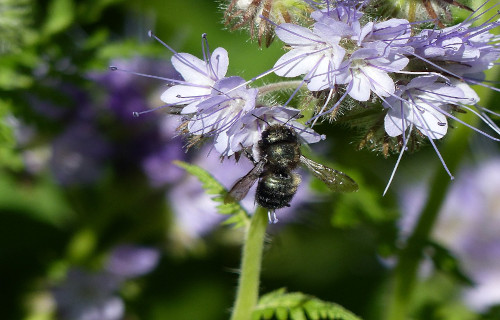
Blue Orchard Bee Facts
- Next up in this compilation of 7 Intriguing South Carolina Insects comes the marvel understandably known as the Blue Orchard Bee.
- This small yet still intriguing invertebrate is most frequently referred to by the descriptive common name for the obvious reason. The Arthropod does have another, similar general name, though. That’s the slightly longer term of the Orchard Mason Bee.
- Within the scientific community, however, it’s typically referred to by its technical moniker. Fortunately for the layperson, that’s a much simpler name to pronounce than many of its relatives hold. That’s because it bears the official name of Osmia lignaria.
- It received that appellation due to the efforts of the respected American entomologist, Thomas Say. The researcher accomplished the first formal recognition of it as a separate and distinct species. That scientifically noteworthy deed occurred in the 1837.
- It’s of great interest in certain circles, due to its proficiency at pollinating certain crops. Long term geographical separation of its population eventually led to its division into two separate subspecies. One appears in the east, while the other lives in the west.
- In all parts of its range, however, the Blue Orchard Bee continues to maintain a sizeable and sufficient population base. That sets it apart from many of its less fortunate relatives. Due to this situation, the IUCN currently has no listing for it on the Red List.
- Nevertheless, this marvel of Nature must be considered to be facing several potential threats to its existence as a species. Most of these stem from the actions of humans. They include the perils posed by habitat loss, and of course, ongoing climate change.
Blue Orchard Bee Physical Description
The lovely Blue Orchard Bee certainly merits the attention applied to it. It’s a true masterpiece of evolution.The majority of its physical appeal, however, stems from its appearance, not size. That’s because, regardless of other attributes, it’s quite small.
Regarding its physical attributes, though, it follows a pattern common to related species. That’s in the fact that it displays a certain degree of the physiological characteristic of sexual dimorphism. In its case, this trait manifests in terms of body size and body structure.
Females of this insect attain a larger average length than their male counterparts. These reach an average length measuring roughly 0.55 in (1.4 cm). The body shape of the female also differs from the male, though only slightly. Females are a little stockier in build.
Males of the invertebrate, though only reach a total length averaging approximately 0.43 in (1.1 cm). As indicated above, their overall structure remains somewhat slimmer than females. He also has longer antennae, since these have 13 segments, while the female has 12.
The genders of the Blue Orchard Bee also vary a small degree in general appearance. Females of this natural wonder present a primarily iridescent bluish-gray that sometimes seems almost black. Her body further possesses a relatively dense covering of small hairs.
The male, meanwhile, follows the same overall pattern, with some minor yet notable differences. He typically develops a tuft of lighter colored hair on his head. Although he displays the same covering of fine hairs on his body, that’s less dense on the upper side.
- Kingdom: Animalia
- Phylum: Arthropoda
- Class: Insecta
- Order: Hymenoptera
- Family: Megachilidae
- Genus: Osmia
- Species: O/ lignaria
Blue Orchard Bee Distribution, Habitat, and Ecology
Thankfully, the amazing Blue Orchard Be evolved as native to a comparatively wide expanse of the globe. The full extent of that range might surprise some readers, though. That’s true since this intriguing insect developed as endemic to a large part of North America.
To the north, the intrepid invertebrate appears in all but the most northerly part of Canada. Further south, it makes its home in all but the most southerly parts of the United States. It’s absent from Florida, and the southeast Gulf Coast. It’s not presently known in Mexico.
In all regions in which it appears, the Arthropod displays strong preferences in its choice of habitat. The creature lives almost exlusively in regions of temperate forests. Further specifying its tastes, these areas of habitation consist primarily of various deciduous species.
For undetermined reasons, even within this area, the fascinating creature shows a strong favoritism for the edges of the forest. Such an environment provides it with its various needs. Those include suitable locations for both its nesting and appropriate food sources.
Unlike carpenter bees, the Blue Orchard Bee is unable to drill holes in wood for a nest. Instead, it seeks out such sites as reeds and natural holes in trees, even wooden structures. Though mostly solitary in nature, females do occasionally build nests near each other.
They’re principally active in early spring and summer periods. Though they feed on the nectar and pollen of numerous species, they do appear especially fond of pear, apple, and cherry trees. Males typically hatch first, and the first thing females do upon hatching is mate.
Eastern Tiger Swallowtail
Eastern Tiger Swallowtail Facts
- Appearing next in this gathering of 7 Intriguing South Carolina Insects is the beautiful creature called the Eastern Tiger Swallowtail.
- This breathtaking Lepidoptera most commonly goes by the somewhat informative common name due to its territorial range. Surprisingly, this Arthropod has no other widely accepted general name. That sets it apart from many related species.
- Within certain circles, however, it’s better known by another moniker. That’s its official, technical name. In the annals of science, it holds the name of the Papilio glaucus. Fortunately for the layperson, that’s a much simpler term than most hold.
- The stunning insect received that name due to the efforts of the esteemed Swedish zoologist, Carl Linnaeus. He accomplished the first recorded recognition of it as a separate and distinct species. That scientifically noteworthy action occurred in 1758.
- Its great visual appeal further led to it holding a unique distinction. Within the region it inhabits, it’s been named the official state butterfly of five different states. More specifically still, this marvel’s also the formal state insect of yet another state.
- Thankfully, the gorgeous Eastern Tiger Swallowtail seems to be maintaining a population base that’s both sufficient and stable. That also appears to hold true throughout the entirety of its range. The IUCN, thus has no listing for it on its Red List.
- The remarkable creature nevertheless faces the same threats as most species, at least. Many of these occur directly due to the actions of man. Habitat degradation and loss pose a possible danger. It also faces the potential threat of ongoing climate change.
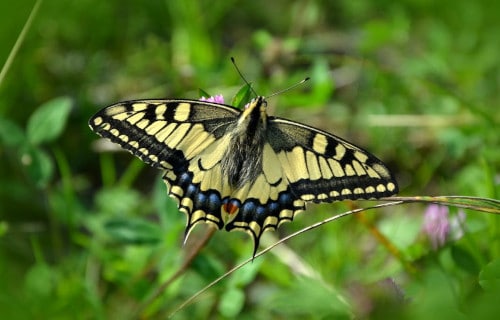
Eastern Tiger Swallowtail Physical Description
The magnificent Eastern Tiger Swallowtail immediately captivates those who encounter it. Unlike some of its relatives, though, it does so for several reasons. Is beauty alone would suffice to impress, to be certain. Yet this wonder of Nature also ranks as a large butterfly.
It does follow one pattern common among Lepidoptera, however. That’s because, like them, it displays a moderate degree of the physiological trait of sexual dimorphism. In its specific case, though, this natural characteristic manifests in both size and appearance.
Females of the beautiful species typically attain a slightly greater wingspan. Interestingly, this also varies according to region. This measurement thus depends greatly on the area in which the individual lives. Overall, however, this averages from 3.1 – 5.5 in (7.9 – 14 cm).
Individuals from the more northern part of its range tend to be smaller than their southern counterparts. This has no apparent impact on their coloring, though. The two sexes, do, however, disintinguish themselves here, too. And the females complicate things further.
Males of the Eastern Tiger Swallowtail present predominantly bright yellow wings. Four black stripes also appear on each forewing. The outer edge also shows black, with a series of yellow dots. The hindwing shows a mixture of yellow, red, and blue spots in various places.
Yet the females show two separate distinct patterns. Some present a primarily dark gray or black background across both wings. Others displays a mainly yellow background, like the males. Faint blue areas also appear on the hindwings, and a row of orange spots.
- Kingdom: Animalia
- Phylum: Arthropoda
- Class: Insecta
- Order: Lepidoptera
- Family: Papilionidae
- Genus: Papilio
- Species: P. glaucus
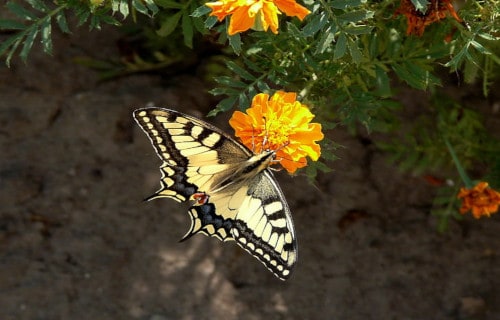
Eastern Tiger Swallowtail Distribution, Habitat, and Ecology
The visual splendor that is the Eastern Tiger Swallowtail evolved as native to a limited region of the world. That area, however, is one that likely won’t surprise many people. That’s true since this marvel of Nature evolved as native to a specific portion of North America.
Even there, though, its range remains limited. It only lives within the boundaries of the United States. As its name indicates, it lives only in the eastern part of the country. That range extends south from Vermont to Florida, and west to Texas and the plains.
This lovely Arthropod evolved as comparatively adaptible in terms of habitat requirements. Within its range, it makes its home anywhere deciduous forests appear. This includes such locations as fields, woodlands, creeks, rivers, roadsides, and gardens.
Yet this fabulous creation of evolution doesn’t stop there in its habitation practices. That’s because it does not hesitate to venture into regions of densely concentrated human populations. Due to this, it’s a common sight in city parks, private yards and gardens, as well.
The Eastern Tiger Swallowtail evolved as diurnal in its behavioral patterns. Most adults live largely solitary lives. Individuals generally fly above the tree canopy, unless descending to feed. Males also seek females by patrolling concentrations of potential food plants.
The adults also use a wide range of food sources. Intriguingly, though, they show a strong preference for the nectar from flowers that are either pink or red in color. Daisies and various legumes are popular choices, though they do not actively seem to discriminate.
Eastern Cicada Killer
Eastern Cicada Killer Facts
- Our next choice for inclusion in this listing of 7 Intriguing South Carolina Insects, the Eastern Cicada Killer, is also the second bee we’re giving you.
- This visually impressive creation of evolution most frequently goes by the somewhat deceptive common name becasue of its habits. The insect does have several other, less often used names, though. These include cicada hawk and cicada killer.
- Within scientific circles, however, it’s generally referred to by its technical title. Unfortunately, though, that’s a slightly difficult term to pronounce for the layperson. That’s because this fabulous Arthropod bears the official name of Sphecius speciosus.
- It received that tongue-twisting moniker due to the efforts of the British entomologist, Dru Drury. He accomplished the first acknowledgement of it as a separate and distinct species. The researcher managed this scientifically noteworthy deed in the year 1773.
- Though intriguing, the name remains somewhat confusing. That’s due to the fact that the same term’s frequently applied to a number of different species with its feeding habits. They’re also occasionally referred to as sand hornets, though not hornets.
- Luckily, the Eastern Cicada Killer appears to be maintaining a population base that’s both stable and sufficient. That fortunate trend further seems to hold true throughout the entirety of its range. The IUCN, therefore, has no listing for it on the Red List.
- Nevertheless, this wonder of Nature must be considered to be facing at least some potential threats to its existence as a species. Habitat degradation and outright loss pose potential dangers. Its greatest threat, though, likely consists of climate change.
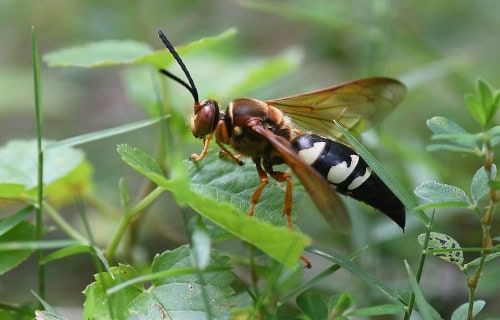
Eastern Cicada Killer Physical Description
The fascinating Eastern Cicada Killer quickly gains the appreciation of those who respect Nature. Unlike some species, however, it does so for several reasons. In its case, this occurs due to a combination of both its visual appeal and its sheer physical measurements.
Like many insects, it additionally displays a certain degree of the physiological characteristic of sexual dimorphism. In its specific situation, though, this trait manifests itself in terms of pure size. More precisely, females attain a larger average size than their male counterparts.
Both genders, though, vary significantly in body length, due to various local environmental factors. Overall, however, mature adults reach average total lengths ranging from 0.6 – 2 in (1.5 – 5 cm). Although rare, exceptional individuals sometimes exceed this length.
Otherwise, specimens of both sexes remain virtually indistinguishable to untrained observers. The general form is often described as robust, though elongated, as most of its kind. Its general appearance, in fact, resembles several species of yellowjacket and hornet.
The head of the Eastern Cicada Killer develops as comparatively large in relation to body size. Its eyes also attain a relatively large size for its kind. The long, jointed legs generally display a bright orange-yellow shade. The wings, meanwhile, show a light or dark brown hue.
It’s the body of this distinctive Hymenoptera that mosts catches the eye, though. The thorax, or middle section, shows reddish and black colors, along with a covering of dense hairs. It abdomen, however, manifests a black background, along with bright yellow stripes.
- Kingdom: Insecta
- Phylum: Arthropoda
- Class: Insecta
- Order: Hymenoptera
- Family: Crabronidae
- Genus: Sphecius
- Species: S. speciosus
Eastern Cicada Killer Distribution, Habitat, and Ecology
The impressive Eastern Cicada Killer evolved as native to a moderately broad swathe of the world. That’s also a region of the globe well known for its abundance of natural marvels. That’s true since it evolved as endemic to a portion of the continent of North America.
That’s where the mild deceptiveness of its name comes into play, though. It’s true that the invertebrate appears in the eastern sections of the United States, to be sure. Yet, it also lives in the midwest part of the country, in addition to Mexico and parts of Central America.
This intrepid creation of evolution developed as highly versatile and adaptible in its choice of habitat, too. That’s a large aid in its survival. Within its native range, the insect makes its home in a wide range of locations. This even includes around areas of human habitation.
It makes its home by burrowing into the ground, to construct a nest. To do so, it merely requires the soil to be well-drained, preferably sandy or loose clay in composition. It often appears in areas of grass-covered banks and hills, and next to raised sidewalks and patios.
The Eastern Cicada Killer evolved as solitary in nature, unlike more eusocial species. Adults emerge in summer, usually late June or early July. These typically feed on a wide variety of flowers for their nectar, as well as the sweet sap of various locally available plants.
Males tend to be quite aggressive towards each other, establishing breeding dominance. To humans, though, they pose no dange, since they have no stinger. Only females possess this appendage, using it to stun their prey. Their main food consists of cicadas, thus the name.
June Bug
June Bug Facts
- Now makoing its presence felt in this article about these 7 Intriguing South Carolina Insects is the sole beetle represented, the June Bug.
- This intriguing product of Nature and evolution most frequently goes by the appropriate common name we’re using herein. Yet it’s sometimes known by similar variations of this term. These include such titles as June Beetle and Green June Beetle.
- Among entomologists, however, it’s better known by its technical name. Fortunately for the interested layperson, that’s a relatively simple term, as such things go. That’s because this wonder of creation bears the formal name of Cotinis nitida.
- It received that reasonably simple technical name due to the efforts of Carl Linnaeus. The eminent Swedish zoologist and botanist accomplished the first recorded recognition of it as a separate and distinct species. He achieved that recognition in 1758.
- Regardless of the term one chooses to use, it remains a very fascinating insect. Unfortunately, though, it’s considered something of a destructive species. It’s also sometimes confused with another, related invertebrate that lives within the same range.
- Within its native territory, the June Bug appears to be maintaining a population base that’s both stable and sufficient. That situation further seems to hold true throughout the entirety of that range. The IUCN, therefore, currently does not list it on the Red List.
- The insect nevertheless does face the same potential threats as most other creatures. Most of them stem from the actions of man. These include such dangers as habtitat degradation and loss. It also now faces the perils posed by ongoing climate change.
June Bug Physical Description
The appealing June Bug is a variety of invertebrate that captures the attention of many people within its range of habitation. It’s usually of more interest for its sheer visual appeal, than simple physical size. That’s because the insect ranks as an average-sized beetle.
Unlike many of its relatives, though, it displays no noticeable degree of sexual dimorphism. Due to the lack of this physiological characteristic, adults of both genders remain virtually indistinguishable to the untrained eye. Yet what they does see merits appreciation.
Mature adults attain a total body length averaging from 0.6 – 0.9 in (15 – 22 mm). Exceptional individuals, however, sometimes measure up to 1.06 in (27 mm) in length. The body of the Arthropod also reaches an average width of approximately 0.5 in (12 mm).
It’s the exoskeleton of the aptly-titled June Bug, though, that usually gets the most attention. That’s due to the vibrant color scheme generally presented by fully mature adults. This background most commonly develops as an almost uniformly bright metallic green.
Nevertheless, a percentage of specimens present a very different appearance. Some individuals manifest a primarily dull brown background. In these cases, that’s typically accompanied by thin green stripes. The margins of the forewings also show orange yellow.
- Kingdom: Animalia
- Phylum: Arthropoda
- Class: Insecta
- Order: Coleoptera
- Family: Scarabaeidae
- Genus: Cotinis
- Species: C. nitida
June Bug Distribution, Habitat, and Ecology
The intriguing June Bug evolved as native to a somewhat small expanse of the globe. The location of that zone of habitation, though, won’t surprise many people. That’s true since it developed in a region of the world already known for its wide variety of insect life.
More precisely, it developed as endemic to the continent of North America. Even there, however, the small animal makes its home in only a specifc portion of it. The vast majority of its population appears in the east and midwest portions of the United States.
There, it lives from Florida in the southeast, to Texas in the west. Northward, though, this territory extends up into the midwest as far as Nebraska. In the far northeastern region, the natural marvel appears as far north as the southeastern portions of the country of Canada.
In all portions of that native range it displays the same preferences in where it makes its home. These, however, include a wide variety of ecosystems. Individuals often appear, sometimes in numbers, flying close to the ground. They prefer fields, lawns, and forests.
After mating, the female June Bug lays 60 – 75 eggs underground. These subsequently hatch after about 18 days, into the larval form. They mainly feed on mold and humus, but in numbers can severely damage plants and even lawns. Thus they’re considered pests.
The adults of the species typically finally appear in June, thus the name. These mainly feed on a variety of fruits. That includes grapes, peaches, berries, apples, nectarines, figs, and pears. Its own natural predators are quite numerous, including birds, especially blue jays.
Grizzled Mantis
Grizzled Mantis Facts
- The next species showing in this compendium of 7 Intriguing South Carolina Insects is the wonderfully camouflaged Grizzled Mantis.
- The highly descriptive term applied to it serves as generally used common name for a most unusual variety of mantid. But that’s not its only name. Professional researchers likely know it better by the scientific name of the Gonatista grisea.
- Regardless of the name used for this mantis, it remains a most remarkable species. This holds true due to the extreme camouflage abilities it displays. While most mantises utilize this principle, very few take it to the level of this creature.
- The first known identification of this marvel of Nature actually occurred more than two centuries ago. More precisely, that took place in the year 1793. That arose from the incredible work of the Danish zoologist Johan Christian Fabricius.
- For the moment, the IUCN has no listing for this species. Any such listing would appear on the organization’s Red List of Threatened Species. This occurs because of a combination of its natural range and apparently stable population base.
- The Grizzled Mantis, like many related species, nonetheless may be considered to be at risk. Just as them, this insect must deal with ever-declining choices of habitat. It must, however, also be considered to be at further risk from the effects of climate change.
Grizzled Mantis Physical Description
While the beautiful Grizzled Mantis does impress the viewer, it does not do so due to physical size. In point of act, this amazing invertebrate represents slightly smaller than average-sized variety of mantid. Like its many brethren, it also displays sexual dimorphism.
In its case, though, the difference remains quite small. As it happens, females attain an average body length roughly 0.08 in (2 mm) greater than the males. Males reach an average length equaling 1.5 in (38 mm). Meanwhile, the females average 1.58 in (40 mm) long.
The males also tend to have a somewhat slimmer form than their female counterparts. Otherwise, both genders appear identical. The overall color scheme consists of a grayish-green, with mottled dark markings. These usually appear as a mix of brown and black.
It head further displays the triangular shape typical of mantises. However, the eyes of the Grizzled Mantis grow particularly large. Those of the males generally grow slightly larger. The antennae of this species are commonly about half the length of the body.
- Kingdom: Animalia
- Phylum: Arthropoda
- Class: Insecta
- Order: Mantodea
- Family: Mantidae
- Genus: Gonatista
- Species: G. grisea
Grizzled Mantis Distribution, Habitat, and Ecology
The fabulous Grizzled Mantis has a moderately extensive range of habitation. However, that’s also quite broken in nature. The majority of individuals appear in an area from the states of Florida to South Carolina, in the United States, in North America.
But, scattered smaller populations also appear kin other locations. These include portions of Cuba, Jamaica, and Puerto Rico. Yet, it remains unknown if these represent true native populations. The possibility exists that these could have been unknowingly transplanted.
Wherever it appears, the arthropod has decided habitat preferences. This species prefers any area with plentiful foliage, most especially various trees. Obviously, this mainly includes local forests, but can include parks, and even private yards.
Like other mantids, the fascinating Grizzled Mantis evolved as a fully predatory carnivore. In its case, it prefers to hunt on trees, where it can make maximum use of its camouflage abilities. Its prey consists almost exclusively of varying small arthropods.
After mating, eggs are enclosed in a protective case. Most commonly, the female attaches this to a leaf or twig. As many as 200 eggs may be found in a single case, known as an ootheca. Once hatched, these quickly progress to adulthood, usually with a 1-year life span.
Luna Moth
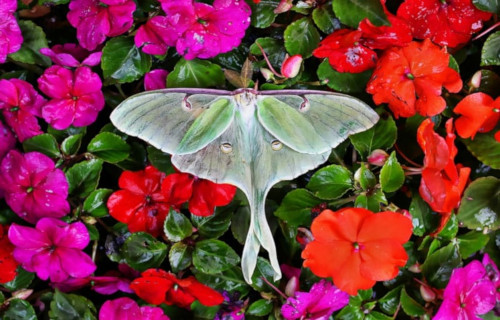
Luna Moth Facts
- Completing this grouping of 7 Intriguing South Carolina Insects comes the third Lepidoptera listed, the dazzling Luna Moth.
- This stunning species of invertebrate bears the common name being used here. It also holds the comparatively short and simple scientific name, however, of the Actias luna. By either term, though, it represents a fabulous and fascinating creature.
- Like many of its kindred, it owes its scientific name to one of the best known of early researchers. In this case, that’s the renowned Swedish botanist and zoologist, Carl Linnaeus. He made the first official recognition of it as a separate species in 1758.
- That wasn’t its first discovery, however. In point of fact, it holds a place of moderate historical importance in the annals of science. That’s because of its earliest recognition. While Carl Linnaeus gave it its first formal recognition, it was first noted in 1700.
- That fact made it the first insect of its kind to be described in any way in scientific literature. It also holds yet another distinction, though. The invertebrate, in point of fact, easily ranks as one of the largest moths found anywhere in its native range.
- This magnificent Lepidoptera also holds yet another status in the local popular culture of a specific portion of its range. This occurs due to the fact that the arthropod appeared on a first-class postage stamp in the United States, issued in June 1987.
- For the moment, the Luna Moth appears to be maintaining a stable and sufficient population base. The IUCN, therefore, presently lists it as Least Concern. It nonetheless does face some threats. These include habitat loss and climate change.
Luna Moth Physical Description
Though not its only distinctive feature, the magnificent Luna Moth nonetheless does impress one due to its sheer size. In point of fact, it ranks as one of the largest of all Lepidoptera, in terms of wingspan. That size varies greatly among individuals, however.
The invertebrate further displays a slight degree the the physiological trait of sexual dimorphism. In its specific case, though, this has nothing to do with physical size. Instead, this manifests itself in the fact that the antennae of the male grow longer and wider.
Otherwise, the genders remain remarkably similar in appearance. Both sexes attain an average wingspan measuring roughly 4.5 in (11.4 cm). Some exceptional individuals, however, reach a span of as much as 7 in (17.8 cm). These giants truly distinguish themselves.
Regardless of their span, though, the wings of the breathtaking Luna Moth deserve appreciation for their mere appearance. That’s because of their striking and unique coloring. This consists of a bright lime-green background, offsetting the mainly white body.
The wings also display yet another distinctive characteristic. More precisely, the hindwings stand out. These features develop as highly elongated in shape. This remarkable evolutionary trait only serves to separate and distinguish the species from its brethren even more.
- Kingdom: Animalia
- Phylum: Euarthropoda
- Class: Insecta
- Order: Lepidoptera
- Family: Saturniidae
- Genus: Actias
- Species: A. luna
Luna Moth Distribution, Habitat, and Ecology
The visually unique and stunning Luna Moth, quite fortunately, has an advantage over many related creatures. That’s due to the fact that it inhabits a comparatively extensive range of the world. Yet at the same time, that habitat range qualifies as very specific.
In point of fact, it makes it evolved as native a very specific portion of the continent of North America. More precisely, it inhabits a large portion of the eastern half of the United States. This extends from Florida to Maine and a small portion of extreme northeast Canada.
Within this range, though, the magnificent Lepidoptera exhibits a relatively great degree of flexibility and adaptability in terms of habitat. As a result of this versatility, it inhabits various types of habitats, providing a sufficient number of certain types of plants are present.
Like most of its kind, the Luna Moth evolved as nocturnal in nature. Flying at night, females release powerful pheromones, to attract the males. These the males detect with their sensitive antennae. They can further do so from as great a distance as several miles.
Although adults do not feed for the duration of the life cycle, the larvae feed voraciously, typically on the same tree their cocoon was place on. It also feeds primarily on several varieties of broadleaf trees and is itself mainly preyed upon by bats and various birds.
7 Intriguing South Carolina Insects
We hope that each of you enjoyed reading, and hopefully learning from, this article we’ve written about these 7 Intriguing South Carolina Insects. It’s also our hope that doing so has left you with either a new or renewed appreciation for such wonders of Nature.
Unfortunately, however, many of their kindred around the world now find themselves facing strong threats to their continued existence as a species. Many of those dangers, in fact, stem from the actions of mankind. We must do all we can to protect and preserve them all.
Check out our other articles on 5 Marvelous Mediterranean Sea Species, The Mighty Tornado, 3 Magnificent Manatees, Wonderful Wild Cats of the World
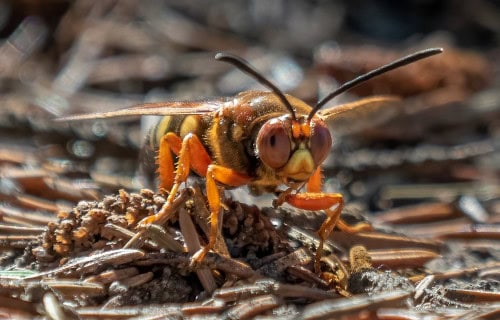
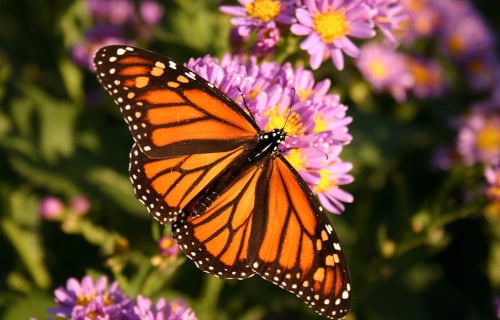
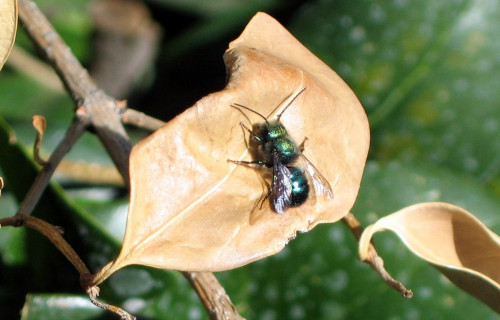
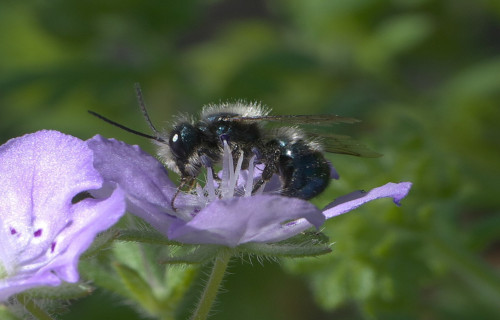
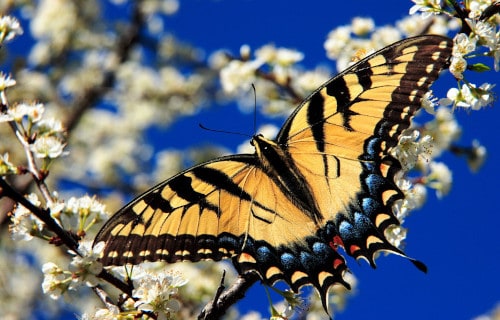
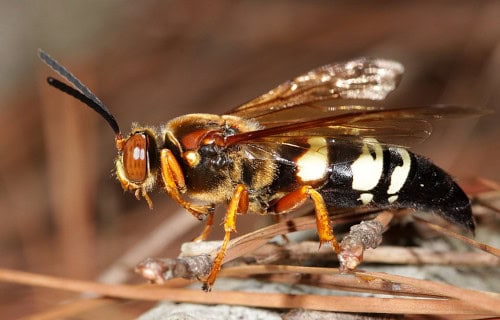
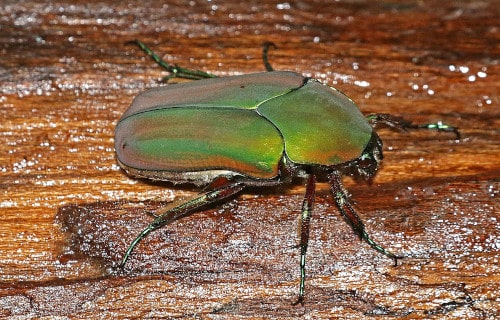
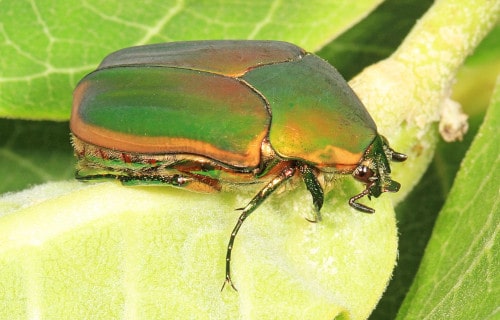
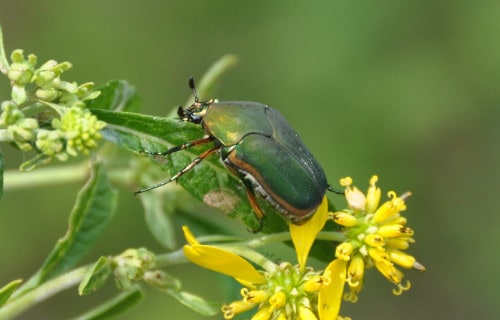
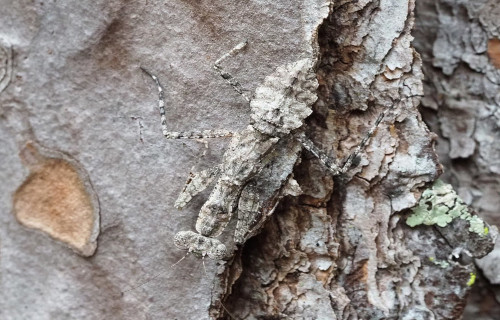
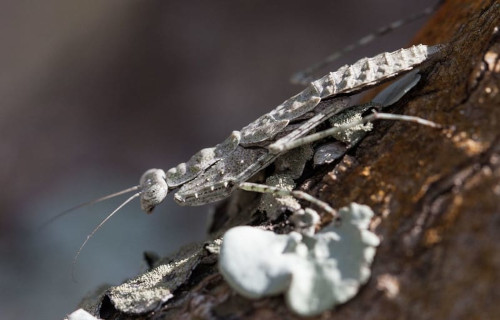
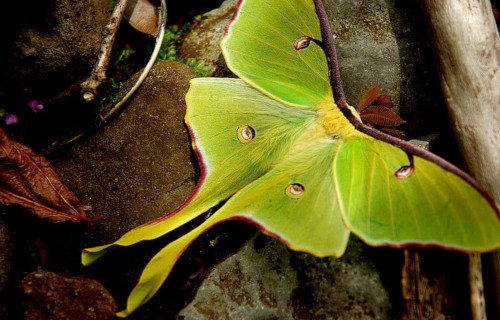
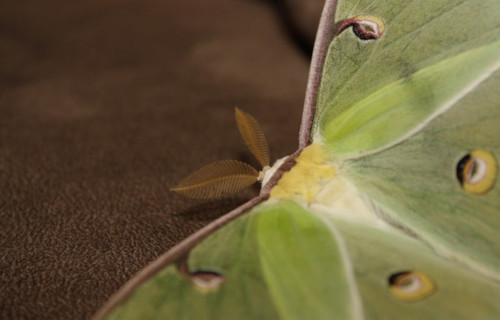









Leave a Reply